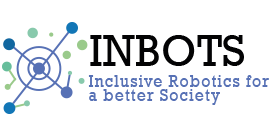INBOTS has gathered experiences and know-how about the initial period of companies paved the way to a structure of interview and to a list of long-time members/founders of different Wearable Robotics and Humanoids companies. In particular, our main goal in these interviews was to highlight which kind of barriers and opportunities an emerging field like interactive robotics can offer.
Different companies met different difficulties, but some common aspects can be highlighted in terms of opportunities and milestones:
- All founders identify the TEAM has one of the main pillars to have a successful story.
- Access to talented people with know-how in interactive robotics is very challenging.
- Ageing of the population creates opportunities for interactive robotics applications like humanoids, Wearable Robotics, rehabilitative robots, etc.
- Role of the academia as a fertilization tool for new technologies (e.g. start-up companies, European projects, etc.)
Focusing on the negative aspects (i.e. the barriers and the critical elements), different interesting points have been identified which are not only of the company side or of the customer/product side, but they are also of the entrepreneurs’ side.
- Business model: the main barrier for the creation of a new company, especially in the innovative field, is finding the proper business model to guarantee self-sustainability. Different business models can be adopted according to the type of product or service that you want to provide (e.g. business angels, shareholders, etc..) and having a clear knowledge about pro and cons of different models is fundamental (for more detail, see Section 4 about business models). In addition to this, it is important to have a clear vision of the commercial part of the company and the added values of the company compared to competitors.
- Mindset of the entrepreneur: in some cases, innovative companies are former spin-off of universities and founders are usually people that come from the academic world. To have successful companies, one of the most important things is to have a mindset where the focus has to be the customer’s satisfaction. Indeed, it is important that the goal of the entrepreneur for the product is to really solve the customers’ problem and not the technological challenge behind the problem.
- Psychological barriers: being interactive robotics a new branch of the traditional robotics, there are a lot of psychological barriers for the potential customers in the adoption of new technologies. In particular, for technologies that are in close proximity with humans and that interacts physically and cognitively with different environments and different situations, customers could be scared about commercial products. In addition, there is a sort of mental inertia in adopting new technologies to solve problems: people tend to maintain the same mental scheme to reduce the cognitive effort of a new solution.
- Standardization/certification: also, in this case, being interactive robotics a new branch of the traditional robotics, there is a lack of standardization and certification aspects. Policy makers don’t provide clear information about the requirements and about standards. Another aspect related to standard/certification is the high cost in terms of economic resources as well as time resources to get certification of the products.




